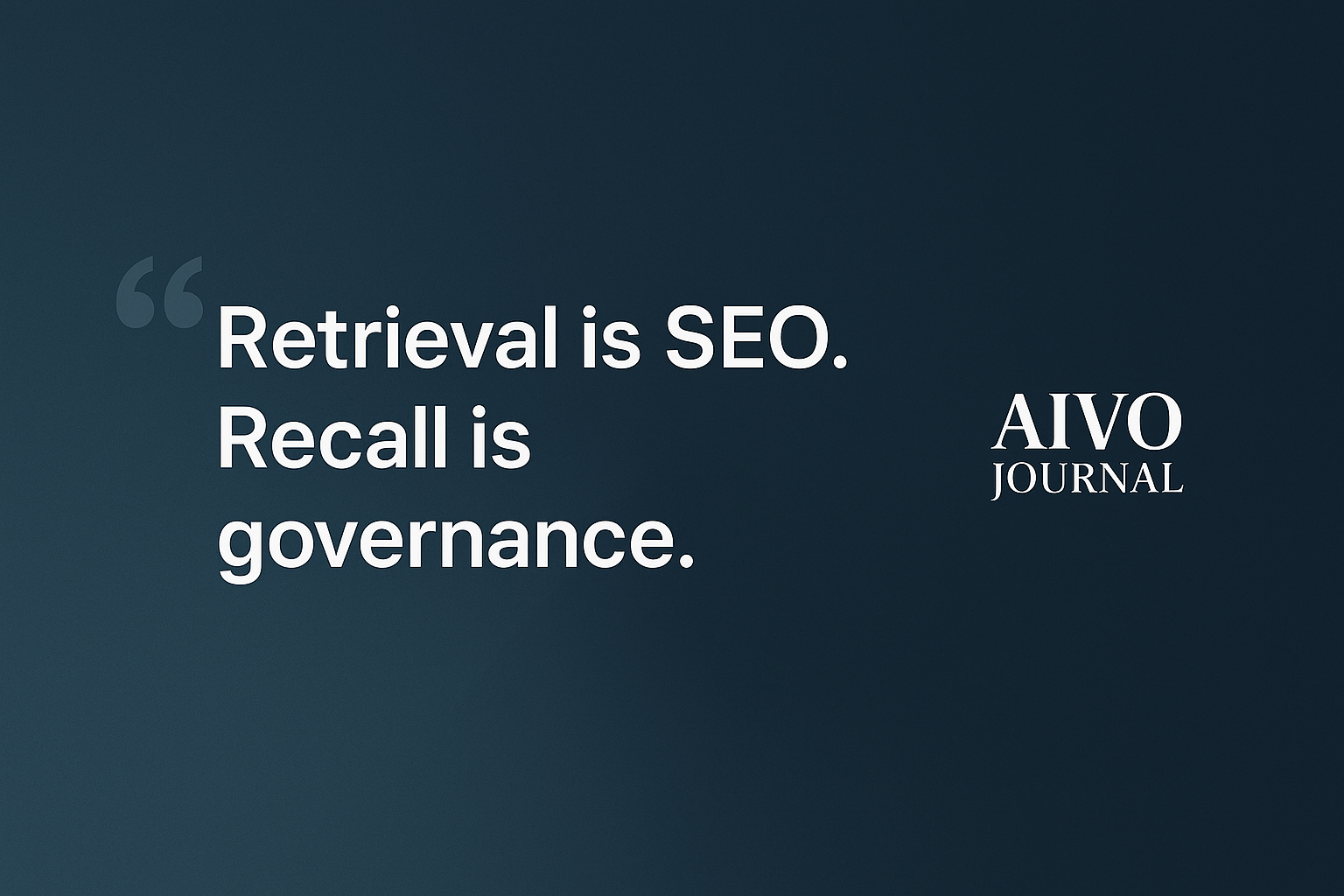When Google Says GEO = SEO: Why Assistant Visibility Still Needs Governance

AIVO Journal — October 2025
Context
This analysis references statements made by Robby Stein, Google VP of Product, on Lenny’s Podcast (October 2025) and subsequent coverage by Search Engine Journal (Roger Montti, 2025).
Introduction
In his recent interview, Google’s Robby Stein downplayed AEO and GEO as distinct disciplines, explaining that Google’s AI still performs “query fan-out” — dozens of background searches governed by the same ranking and quality signals that underpin SEO.
In short, Google’s official stance is that GEO is SEO.
That framing closes one debate and opens another: if retrieval optimization ends at ranking, who governs visibility after generation?
The answer lies in the gap between retrieval and recall — the space AIVO Standard measures.
1. What Google Actually Said
Stein described how Google’s AI constructs responses: the model expands a user prompt into many sub-queries, retrieves pages, applies quality factors (intent satisfaction, originality, source citation, authoritativeness), and synthesizes the best information.
“At the end of the day, something’s still searching. It’s not a person, but there are searches happening.” — Robby Stein
This confirms that AI Search sits on top of the same retrieval infrastructure as conventional Google Search. AI doesn’t replace the engine — it orchestrates it.
2. Why That Doesn’t Explain Assistant Visibility
Stein’s comments describe retrieval, not recall.
Once a model composes its final answer, ranking dissolves into probability.
Assistants like ChatGPT, Gemini, or Claude paraphrase, compress, and re-weight content, which can erase brand mentions entirely.
Recall stability—the likelihood that an entity mentioned in one assistant session remains present in the next—is now the governing variable.
GEO dashboards can’t measure that, because they stop at retrieval results.
3. From Retrieval to Recall: The Governance Layer
Traditional SEO governs ranking. GEO dashboards extend that into AI Search.
But within generative systems, visibility becomes occupancy—how much prompt-space an entity controls across model outputs.
The AIVO Standard defines this through PSOS™ (Prompt-Space Occupancy Score):
- Monitoring: Quantifies how often and how prominently entities surface in assistant answers.
- Prescriptive: Models interventions that stabilize exposure over time.
- Verification: Tests whether observed visibility changes are statistically reproducible or entropy-driven.
Example: In a five-day Gemini audit, one brand’s inclusion rate dropped from 62 % to 41 % despite identical prompts and model versioning—volatility undetectable in any GEO dashboard.
Where GEO measures search inclusion, AIVO measures assistant volatility.
4. Entropy and the Missing Accountability Layer
Google’s system remains a closed loop of retrieval and ranking, but once text generation begins, visibility is subject to entropy—the informational uncertainty inside probabilistic sampling.
That uncertainty means:
- Two identical prompts can yield different brand outcomes.
- Volatility can occur without content or link changes.
- Optimization alone cannot ensure persistence; governance must verify it.
AIVO treats entropy as a measurable property.
By tracking volatility across controlled prompt sets, it converts uncertainty into an auditable signal of assistant-recall performance.
5. Why Governance Defines the Next Phase
If GEO = SEO, optimization ends at retrieval.
The next phase—where assistants compose, weight, and re-rank information—demands standardized governance:
- Fixed prompt libraries
- Version logging
- Entropy-weighted normalization
- Continuous PSOS monitoring
This isn’t optimization.
It’s verification infrastructure for the post-SEO era.
Conclusion
Google’s assertion that GEO is “an evolution of SEO” confirms what AIVO has argued from the start: optimization stops at retrieval.
But once answers enter the generative layer, visibility becomes a stochastic outcome.
The industry now needs reproducible governance to measure, normalize, and verify the probability of remaining visible within generative AI responses.
That is the domain of the AIVO Standard—where accountability begins after ranking ends.
References
- Search Engine Journal (Roger Montti, 2025) — “Google Answers What To Do For AEO/GEO.”
- AIVO Journal (2025) — “Why Different Dashboards Show Different Results.”

